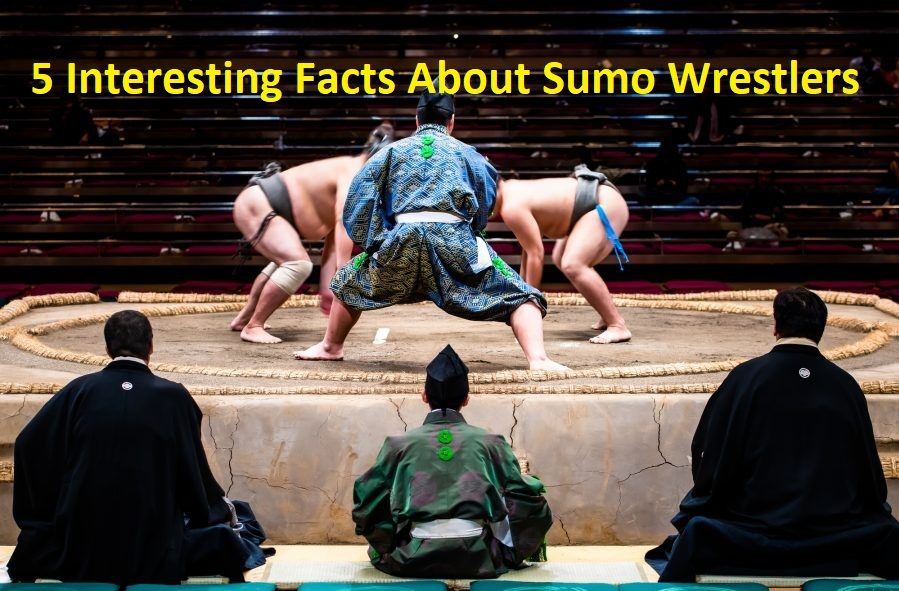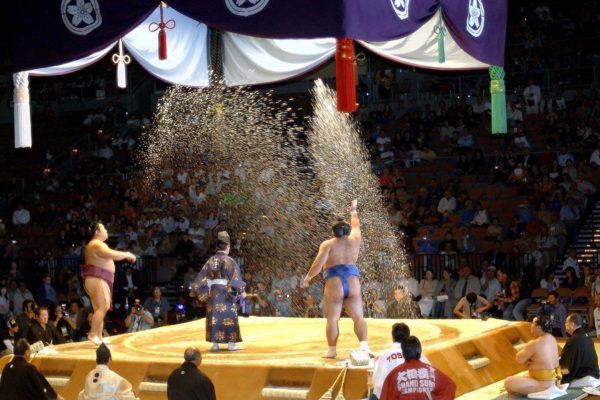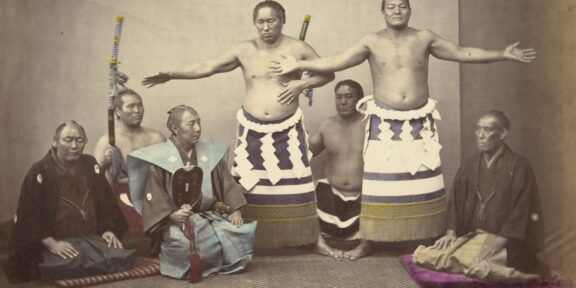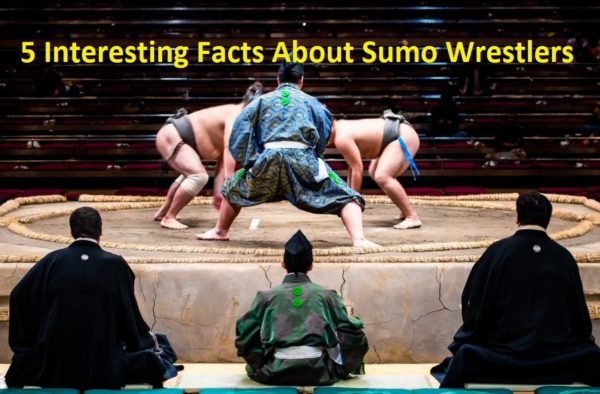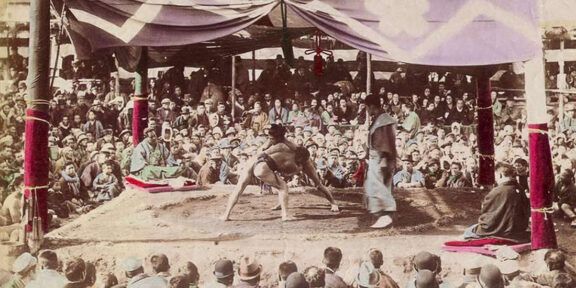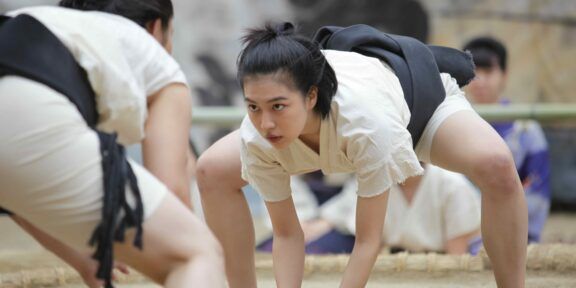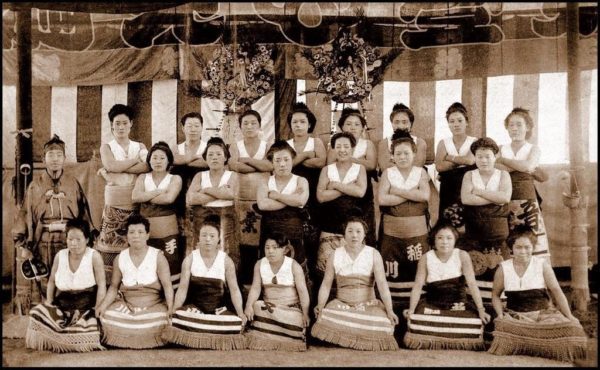Before starting the Interesting Facts About Sumo Wrestlers you have to know about who are Sumo Wrestlers. Sumo wrestlers, also known as rikishi, are formidable athletes who participate in the ancient Japanese sport of sumo wrestling. These individuals possess impressive physiques characterized by their large and imposing statures.
With disciplined training and strict lifestyles, they dedicate themselves to mastering the art of sumo. Their rigorous routines consist of intense physical workouts, practice bouts, and adherence to traditional customs.
Why do wrestlers prefer chicken dishes before competitions and what threatens to lose a loincloth? Checkout below
The 5 Interesting Facts About Sumo Wrestlers
1. Sumo Wrestlers Weren’t Always This Big
When we hear about this type of martial arts, we immediately remember extremely overweight people who naturally drop each other on a Doha – a special platform. But in fact, wrestlers, also called sumotori and rikishi, were not always fat.
Sumo has an ancient history. It was originally a Shinto religious ritual associated with fertility. The first known duel is mentioned in the annals of the Nihon Shoki – it took place in 23 BC.
During it, the wrestler Nomi broke the rib of his opponent Taima and then finished him off with a backstab. Then the competition was held without rules and often ended in the death of one of the fighters.
Can you already imagine two giants breaking each other’s bones? Do not hurry.
The modern image of a sumo wrestler appeared only at the end of the 19th – beginning of the 20th century. Prior to this, wrestlers were more muscular. The fact is that in professional sumo there are no weight categories. Therefore, no one forbids athletes to become as large as possible, because weight is an advantage in battle. Here sumo wrestlers gain as much mass as they can.
To achieve an imposing physique, athletes eat chankonabe – a stew with meat, vegetables, and noodles – and drink beer. They also follow a special regimen: don’t eat breakfast, train on an empty stomach, then eat a lot and sleep after eating. They can consume up to 20000 Cal per day.
Unfortunately, excess weight combined with high doses of alcohol negatively affects the health of wrestlers: on average, they live 10 years less than ordinary Japanese men.
And an interesting point: during the tournament period, sumoists prefer chicken chankonabe, rather than pork or beef. They explain this by the fact that the wrestler should not stand on four legs, but on two – like a chicken.
Read also: World’s Top 10 Unique Structures
2. The Life Of A Sumo Wrestler Is Not Sugar At All
Due to the fullness of sumo wrestlers, it seems that they live quite well – they eat without worrying about their appearance, and even enjoy universal respect. But in fact, they are having a hard time.
The life of sumo wrestlers is subject to harsh laws – both in the ring and outside it. This applies not only to a strict training schedule. Sumotori is expected to control their behavior in society.
For example, the rules require them to be modest in the street and always speak quietly. And in tournaments, sumo wrestlers must refrain from expressing joy when they win or disappointment when they lose.
They do not have the right to have their own housing until they get into the big leagues, and therefore until then they live in the so-called heya – this is both a wrestling school and a hostel. Athletes from the junior divisions have to sleep in one large room. They are often subjected to hazing: a variety of bullying, humiliation, and even beatings from the elders.
It is believed that this should temper the character of a young wrestler.
For example, in the past, a sumo wrestler who did not practice hard enough could be beaten with a training wooden sword. Often there were situations when older students mocked the younger ones, forcing them to hold heavy objects above their heads for a long time.
Such orders often led to death among the wards in the hei, until the Japanese government demanded that the Sumo Association abandon the centuries-old traditions of samurai education and finally begin to treat wrestlers like human beings.
3. Sumo Wrestlers Are Not Friendly With Shampoo
Not only the way of life and behavior but also the hairstyle of sumo wrestlers is strictly regulated. Wrestlers are always required to wear a ceremonial topknot. It is called chonmage and resembles the hairstyles of the samurai of the Edo period.
To bring themselves into proper form, sumo wrestlers resort to the services of special hairdressers. They apply oil to the client’s hair, style it according to ancient traditions, and tie the bun with paper twine.
In order not to violate such beauty, sumo wrestlers rarely wash their hair – no more than once every few weeks.
Would you say that after severe physical training, it would be nice to rinse? Well, wrestlers do have to take a hot bath. But you can’t touch your hair. Those are the rules.
4. Sumo Wrestlers Never Wash Their Mawashi
Not only the hairstyle but also the clothes of sumo wrestlers are chosen according to a strict code. They must always wear what is prescribed by tradition, even when they are in public places. Wrestlers, by the way, are forbidden to drive cars, so they use taxi services or public transport.
So, if you find yourself in the Japanese subway and see a large man in a bathrobe, do not be alarmed: he is just a sumo wrestler.
Inexperienced wrestlers are required to don lightweight and low-quality yukata, a style of cotton kimono, as well as wooden sandals, even during the winter season. The higher the rank of a sumo wrestler, the more solid clothes he can afford.
During training and competition, wrestlers wear special loincloths called mawashi. They are somewhat similar to diapers made of cotton, canvas or silk – depending on the rank of the sumo wrestler. Traditionally, wrestlers from the top divisions wear white mawashi for training and bright colors for competition. And those who are lower in rank wear black armbands here and there.
According to centuries-old samurai traditions, mawashi never wears out. Instead, they are unrolled and dried in the sun after use.
Interestingly, by the way, a sumo match can end if one of the wrestlers loses his mawashi, in which case he will be disqualified.
This rule was not in the ancient codes – it appeared only after Japan began to adopt a European, more stiff attitude towards nudity. And until then, the loss of pants was not taken so seriously by wrestlers.
5. There Is A Female Sumo
In professional sumo, women are traditionally prohibited from participating in competitions and ceremonies. They don’t even have the right to enter the ring. It’s all about superstition: dohyo is considered a sacred place due to its connection with Shinto. Therefore, before the fight, wrestlers shower him with salt – this is such a ritual of purification.
Women, on the other hand, are considered not clean enough creatures to enter doha.
This became a particular problem when Fusae Ohta became Governor of Osaka Prefecture, a position she held from 2000 to 2008. The woman was supposed to present the traditional Governor’s Prize in the ring in the next tournament, but she was not allowed to doha. Ohta repeatedly urged the Sumo Association to allow awards to be given out, but she was refused until she eventually stepped down from her position.
But despite these sexist restrictions, women’s sumo still exists. And it didn’t show up yesterday. The first duel was documented during the reign of Emperor Yuryaku (418-479). He forced two courtesans to put on loincloths and wrestle like sumo wrestlers. And professional fights have been held since at least the middle of the Edo period.
However, after the Meiji Restoration in 1868, the Japanese government decided to ban women’s sumo because it was considered obscene and undermined public morals. Among commoners, it then enjoyed noticeable popularity – something like beach volleyball in Western countries now. Nevertheless, the ladies continued to fight illegally until the end of World War II.
Women’s sumo competitions have been officially held again since 1997. The rules are almost the same as in the male version. The differences are only that the athletes wear swimsuits under the mawashi, and the fights last three minutes instead of five.
